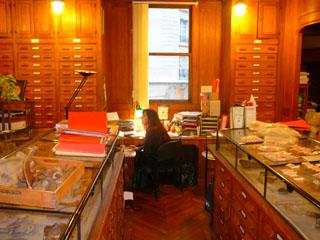|
|
 |
|
Marylène Patou-Mathis, researcher at the CNRS, is also in
charge of the zooarchaeology department at the Muséum National d’Histoire Naturelle,
Paris. |
 |
|
|
 |
|
A passionate militant in her own manner, Marylène Patou-Mathis
is fighting to prove that Neanderthal is by no means inferior to Cro Magnon. |
|
|
|
|
 |
|
She has learnt much about Neanderthal’s lifestyle and hunting
habits by studying the faunal remains found near him.
|
 |
|
|
